Days 33, 34, and 35: Doughs. Nuts. Finally, some pork.
[To my reader or readers: I hope it’s okay that I’m compiling posts like this. Tell me.]
Last week’s three sessions went by in a sort of dreamlike haze, and not just because there was far-flung flour covering every surface in the room. (Although, admittedly, that was probably a large part of it.) The correct planets must have come into alignment (I’m still researching this), or some unseen but ill-humored force must have been hard at work in our kitchen. Whatever the cause, fate conspired against us.
Now, let’s level the playing field a bit. I have a lot of favorite foods, we all know it, but let’s ignore that for a moment as we bring our little discussion to the topic of donuts. I get pretty serious about my donuts. There’s little to make me proud of my Dutch heritage when it comes to food; mostly they just boil the dickens out of things, or eat Indonesian. Donuts, however, are my one straw to grasp; that one, perfect food, comfortably unchallengeable in their ivory tower of comestible excellence, that is credited (by people who have the story right) to the Dutchman. Those noble people of Holland, who most of us know so little about, were the first to take globs of sweetened dough and drop them in giant vats of melted pork fat. The momentousness of this discovery is never lost on me. These days, of course, you can only get donuts fried in much healthier fats (especially now that trans-fats are going bye-bye), but my sincere appreciation of them is undiminished. I love donuts. I had been aware that Lesson 33 had been approaching for quite some time, the three-hour segment apportioned to donuts lingering deliciously on the horizon. When finally the day came, my enthusiasm was almost palpable. Lesson 33 began with a demonstration by Chef of his grandmother’s buttermilk donut recipe; not bad, not bad at all. We were then each assigned, in teams, a particular donut recipe. My team was to prepare the sour cream chocolate variety. The first hint of foreshadowing in this novella was when a student who had taken the donut segment in another class before (long story) said how awfully they had come out. My excitement, however, remained. We went on to prepare them precisely according to the recipe supplied in our texts, and every thing seemed in place; the batter tasted right, the oil was hovering steadily at three-seventy-five. When they had been frying happily away for quite some time, it dawned on us that they should be done, although they remained somewhat soft. We removed them; they’re done, Chef said. Fine. We fried the remainder. I noticed next that our first round of three donuts had managed to entirely saturate six paper towels with oil. I have no illusions about how fatty donuts are, but this seemed a bit extreme. Other people’s donuts were shedding a bit of oil, but these were like sponges drying out. Which is what they did. When cool, they were hard and heavy. When pressed hard enough, they would give way and crumble into nothingness, leaving only oil on the finger and a scowl on the brow. The taste? Sort of like nothing, actually, which I can find elsewhere for far fewer calories. Not happy. You know by now that I consider slander to be unseemly, but I can’t help myself tonight. Shame on the person who wrote this recipe; it really sucks.
Picking ourselves up from the dirt, we created our brioche dough, which we retarded overnight. Brioche is a fantastic dough; it’s very rich and buttery, but perfectly neutral at the same time. It bakes up very soft, and lends itself very well to both savory preparations – pigs in a blanket, for example – and sweet ones, like cinnamon rolls. It’s also pretty fun to work with, being firm and elastic and fairly forgiving. The following evening, we removed our dough from its refrigerated environment and shaped it into the classic brioche shape, which is called brioche à tête, the last word meaning “head.” Round little mounds of dough are placed in fluted tins, and a small piece of dough, called a topknot, is placed in the center. We placed our filled molds on a sheet pan and slid the whole getup into the proofbox. Again with the slander, but whoever designed this model should’ve gone to a better school. The racks inside are just one millimeter too wide, so large sheet pans full of probably heavy things can sometimes fall directly downward, onto whatever happens to be beneath them. You already know what got smushed on that fateful night. Some theorize that when Marie Antoinette said “Let them eat cake!” what she actually said was “Qu’ils mangent de la brioche!” which means, “Let them eat brioche!” Whether she said it or not, my brioche-with-heads ended up quite like she did: without one.
After that little disaster, we went from a beautiful, soft French dough to a couple very hard and intractable Italian ones. We crafted dough for both cannolis and for sfogliatelle (don’t worry about how to pronounce it; if you ever see one, just point at it, and smile and nod excitedly at the person on the other side of the display case). These doughs are similar in that they’re both extremely dry, and therefore must be kneaded using a pasta machine. A chunk of rough dough is passed through the pasta machine on the widest setting, and the strip of dough that results is then folded up and passed through once more. This is done again and again, while the distance between the rollers is gradually reduced. This dough eventually becomes smooth, perfectly uniform in texture, and ludicrously thin. We had begun with cannoli dough, and when it was fully kneaded, we stored it in the fridge overnight, a procedure we then repeated for our sfogliatelle. Returning to our doughs the next day, we rolled them out again. First, for cannolis, paper-thin rounds are wrapped around metal tubes, and then, with the tube still in the middle, dropped into hot oil. The fun part here is that you have to take these fragile things off the tubes while they’re still hot. Whatever, it helps build chef hands. While they were cooling, we prepared our sfogliatelle. (Alright, it’s sfoal-yuh-`tell-ay.) This is done by rolling all the dough out into one long strip – I think ours ended up at about ten feet – and then painting the whole strip with a softened, fifty-fifty mixture of butter and lard. (Yes, I was excited too.) It’s then rolled up and, once chilled, cut into half-inch slices. These slices – looking somewhat like unbaked cinnamon rolls only with thousands more layers – are then pressed out from the center into cones, using the thumbs. These beautiful pig-laden cones are then filled with a very smooth, sweet ricotta and orange mixture, and baked on their sides. They’re better than they sound, and I think they sound pretty good. We filled our cannolis as well, with the smoothest cannoli cream I have yet experienced, and gorged on them.
For a change.
Tuesday, February 13, 2007
Subscribe to:
Post Comments (Atom)



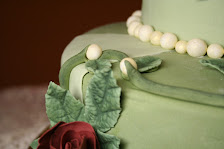

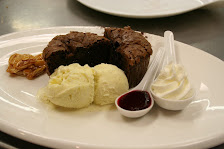
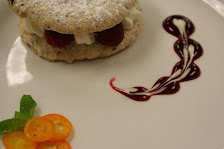
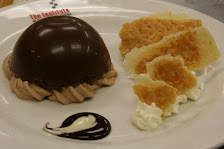
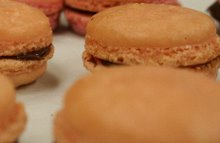
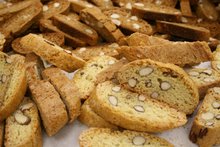
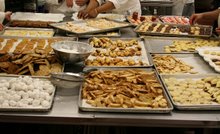



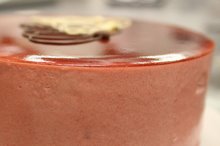



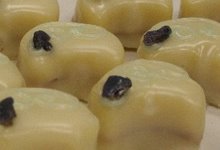
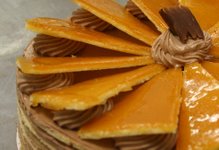



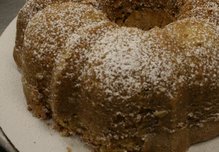
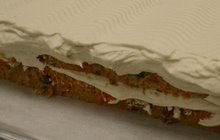


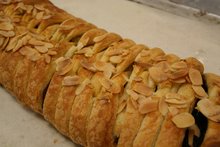






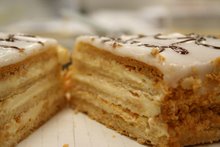
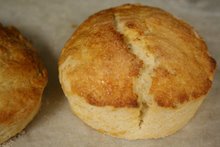


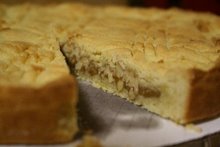












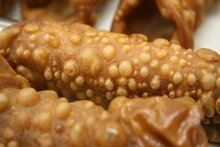


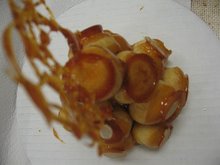
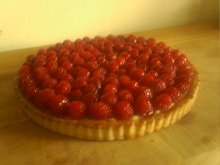


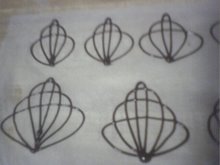


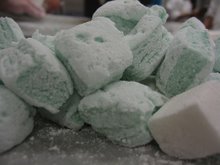

No comments:
Post a Comment